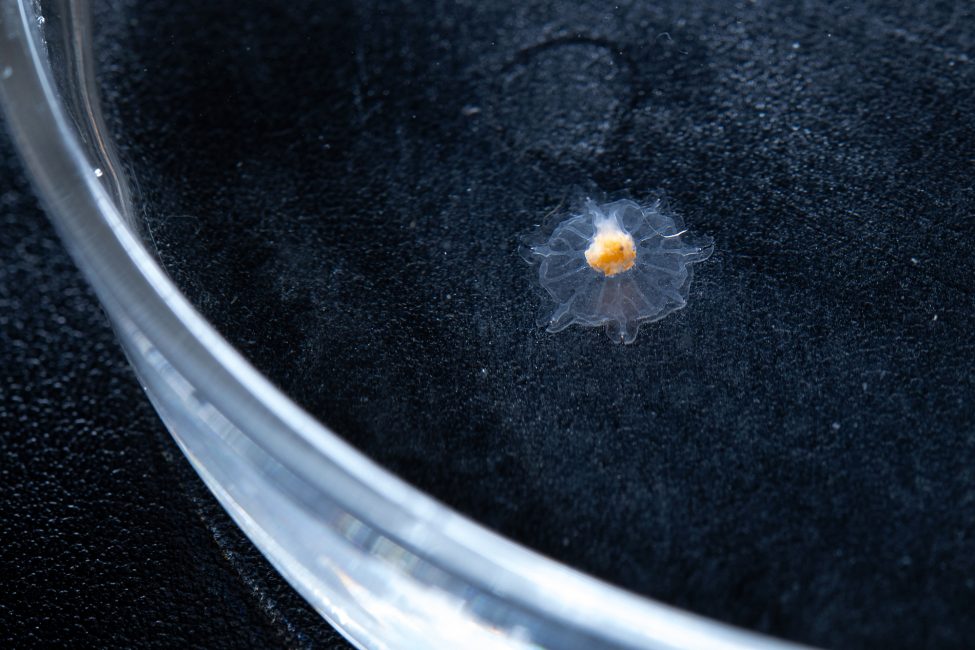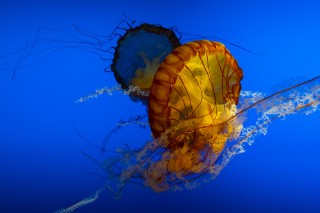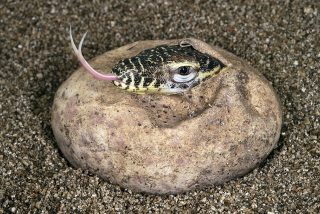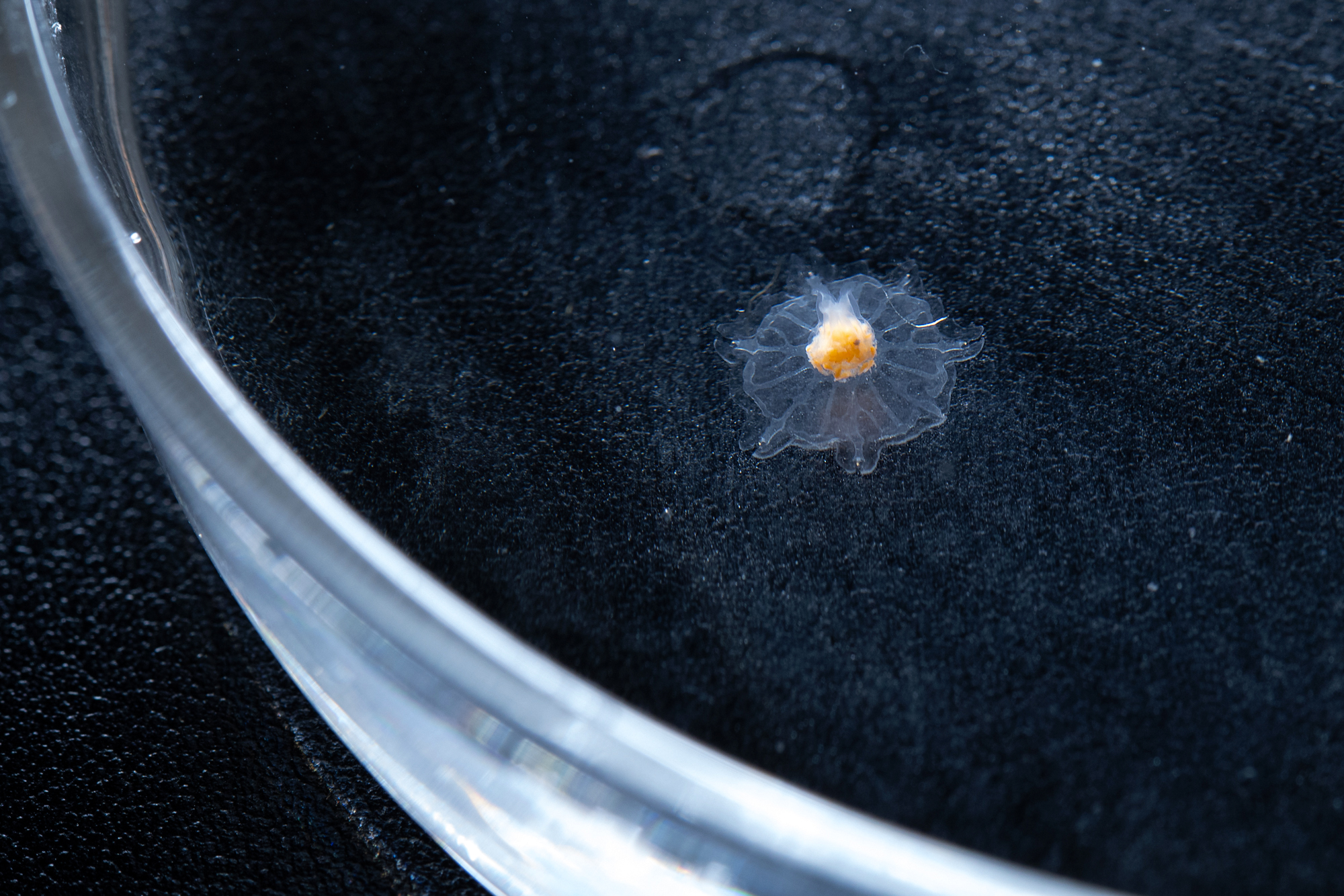
June 8, 2023
Sustainably Stocking Our Habitats
- as seen by -
 Cora Monroe
Cora Monroe
At the Wildlife Conservation Society’s New York Aquarium, we culture our jellies by maintaining habitats behind-the-scenes that house polyps (a life stage of jellies that looks like a small anemone).
Different species require different water parameters in order to strobilate, or produce tiny jellies, called ephyrae. Once the polyps develop ephyrae, we transfer them using pipettes into a plastic box that has been modified with screening. These ephyrae (above, a moon jelly, Aurelia aurita, in a petri dish) are typically around 1-3 mm in diameter, about the size of the point of a new crayon. Adjusting the water flow in these habitats is integral because jellies rely on the current to stay elevated in the water column. Photosynthetic jellies, such as the Australian spotted jelly (Phyllorhiza punctata) need a strong light to sustain the living zooxanthelle in their tissues (algae that helps feed the jellies through a mutually beneficial relationship).
This culturing program was developed while our team was on alternating schedules due to COVID, which required detailed communication between our two groups. I am proud of what we have accomplished when faced with unique challenges throughout the course of the pandemic and look forward to what we accomplish in the future.
EDITOR’S NOTE: Read part 1 of our jelly aquaculture here.
Nikon D6




Leave a Comment
Kathy Pugh
June 11, 2023 at 2:22 am
Excellent concise explanations! Congrats on adapting to unique challenges